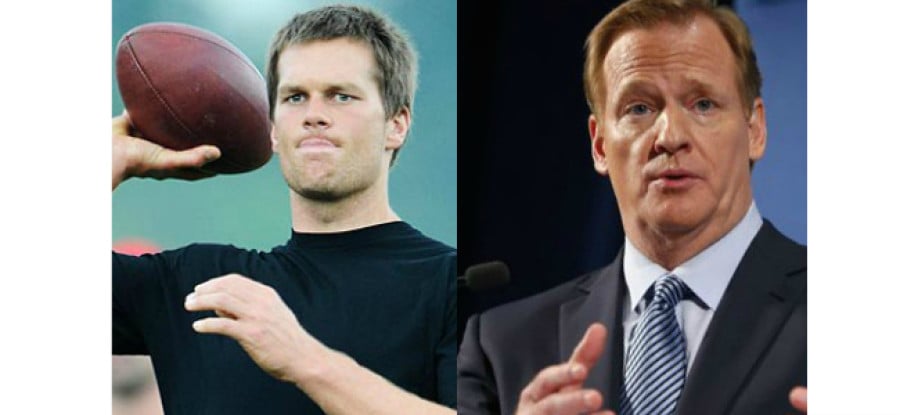Will “Deflategate” lead to changes in the NFL’s dispute resolution process?

The “Deflategate” saga has dominated headlines during the National Football League’s (NFL) offseason in 2015 and has been the one of the most followed sports legal battles in the US since the O.J. Simpson case. The lawsuit, which is still pending in the appeals courts, pits one of the most popular U.S. athletes, New England Patriots quarterback, Tom Brady, against the NFL Commissioner, Roger Goodell.
This article serves as an overview of the key legal and factual issues and in particular focuses on the dispute resolution system in the NFL for handling player disciplinary disputes. The article also considers whether the events will lead to changes in the way the NFL conducts player discipline disputes.
The NFL’s Dispute Resolution System for Player Discipline
The dispute resolution process for player discipline is detailed in Article 46 of the NFL's Collective Bargaining Agreement (CBA).1 Any fine greater than $50,000 or suspension imposed on a player for conduct on the field or for conduct “detrimental to the integrity of, or public confidence in, the game” (which may include off-the-field conduct) is first decided by the Commissioner (or a representative appointed by the Commissioner) and communicated to the player and the Nation Football League Players Association (NFLPA) by written notice (Sec. 1(a), (c) CBA). The player then has three business days to appeal in writing to the Commissioner (Sec. 1 (a) CBA).
The initial hearing
Pursuant to the CBA, the Commissioner has discretion to either appoint one or more designees to serve as the appeals hearing officer(s) or to serve as the hearing officer himself. (Sec. 2 (a)2). There is no guidance in the CBA of who a “designee” may be but former NFL executives and a former federal judge have been appointed in the past. The Parties are required to exchange exhibits prior to the hearing and, if agreed to by the parties, may submit post-hearing briefs within three days of the hearing. (Sec. 2 (f) (ii-iii)).
At the hearing, the parties have the right “to present, by testimony or otherwise, any evidence relevant to the hearing” (Sec. 2 (b)). The hearing officer will render a written decision “as soon as practicable” after the hearing. (Sec. 2 (d)). If a player does not agree with the appeal hearing officer’s decision, the CBA provides for no further level of appeal. In practice, the player’s only legal option is to file a lawsuit against the NFL.
What are the key facts in Deflategate?
It is important to note at the outset that each team provides the footballs that their team uses while on offense. According to Rule 2, Section 1 of the NFL Rule Book,3 these footballs must be inflated between 12.5 and 13.5 PSI.
The Deflategate saga began when Indianapolis Colts’ linebacker D’Qwell Jackson intercepted a pass thrown by New England Patriots’ quarterback Tom Brady during the second quarter of the January 18, 2015 AFC Championship Game. After Jackson reached the sidelines, he immediately gave the ball to his team’s assistant equipment manager, who thought the ball seemed soft. After testing the PSI, the Colts coaching staff determined that the ball measured approximately 11 PSI, which was below the permissible limit.
The Colts coaching staff then notified the game and NFL officials who in turn measured the ball in question and all of the Patriots’ balls during halftime. They found that all of the Patriots’ balls fell below the permissible 12.5 -13.5 PSI range and inflated the balls to fall within the permissible range for use during the second half. The Patriots outscored the Colts 28-0 in the second half and won the game 45-7 to move on to the Super Bowl, which they later won.
Subsequently, the NFL hired Ted Wells of the law firm Paul, Weiss, Rifkind, Wharton & Garrison LLP, to conduct an independent investigation into the incident (although his “independence” was later questioned because the report was jointly authored by the NFL’s general counsel4). The resulting report, called the Wells Report, stated, among other things, that:
“it is more probable than not that New England Patriots personnel participated in violations of the Playing Rules and were involved in a deliberate effort to circumvent the rules.”
A copy of the complete findings, called the “Wells Report”, can be found here.5
As it relates to Brady, the Wells Report concluded that, “it is more probable than not that Brady was at least generally aware of the inappropriate activities” of the Patriots equipment personnel involving the release of air from the game balls, purportedly to give Brady an advantage in throwing the footballs.
To continue reading or watching login or register here
Already a member? Sign in
Get access to all of the expert analysis and commentary at LawInSport including articles, webinars, conference videos and podcast transcripts. Find out more here.
- Tags: American Football | Collective Bargaining Agreement | Deflategate | Dispute Resolution | Governance | National Football League (NFL) | NFL Collective Bargaining Agreement | NFL Players Association (NFLPA) | NFL Rule Book | Regulation | United States of America (USA)
Related Articles
- Another round in favour of sports arbitration: Court confirms boxing disciplinary appeal panel is an Arbitration
- Why enhanced statistics are a game changer for NHL contract negotiations
- A summary of Australian Football’s collective bargaining dispute
- Hot topics Facing In-House Counsel for NFL Teams and U.S. Federations
Written by
Dan Werly
Dan is an experienced sports lawyer and editor-in-chief of the sports law website TheWhiteBronco.com. He spent the last 6+ years working at two large U.S. law firms, including most recently practicing in Foley & Lardner LLP sports law practice group. He has experience working with professional teams, leagues, universities, and athletes on a wide array of legal issues with a general focus on complex civil litigation. Additionally, he is now a featured columnist and sports law expert for BleacherReport.com and a freelance sports attorney and consultant.

 Global Summit 2024
Global Summit 2024